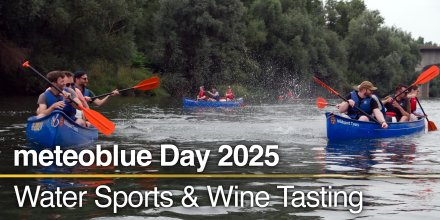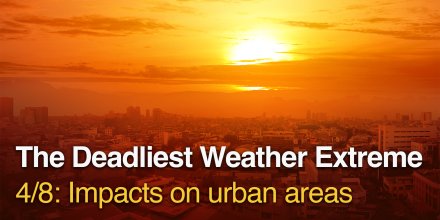
From Water Sports to Wine Tasting: meteoblue Day 2025
At the beginning of July, the meteoblue team gathered for the annual meteoblue day – an offsite filled with nature, laughter and a healthy dose of team spirit.


At the beginning of July, the meteoblue team gathered for the annual meteoblue day – an offsite filled with nature, laughter and a healthy dose of team spirit.

Urban areas experience more intense heat due to dense infrastructure and limited green space.
|
|
|||||||||
|---|---|---|---|---|---|---|---|---|---|
|
Icon
|

|

|

|

|

|

|

|

|
|
|
Temperature (°F)
|
|||||||||
|
Temperature felt (°F)
|
78° |
79° |
86° |
95° |
92° |
88° |
83° |
81° |
|
|
Wind direction
|
NW |
WSW |
NNW |
NW |
N |
NE |
W |
NW |
|
|
Wind speed (mph)
|
NW
2-6
2-6
|
WSW
1-6
1-6
|
NNW
2-5
2-5
|
NW
1-6
1-6
|
N
3-7
3-7
|
NE
1-5
1-5
|
W
3-9
3-9
|
NW
1-6
1-6
|
|
|
Precipitation (in/3h)
|
0.14 in
30%
0.14
|
-
10%
-
|
-
30%
-
|
-
35%
-
|
-
25%
-
|
-
35%
-
|
0.06 in
50%
0.06
|
0.06 in
40%
0.06
|
|
|
Precipitation probability
|
30%
|
10%
|
30%
|
35%
|
25%
|
35%
|
50%
|
40%
|
|
|
Precipitation hourly
|
|||||||||
|
rainSPOT
Precipitation distribution within 20 km
|
|
Overnight into Monday there is a chance of thunderstorms and local showers. During the day the weather will clear up until only a few clouds remain. It is a sunny day. The chance of precipitation is moderate or near 50%. Temperatures peaking at 85 °F. With UV-Index rising to 9, sun protection is strongly recommended. On Monday light air is noticeable (1 to 4 mph). Winds blowing at night and in the morning from Northwest and during the afternoon from North. The weather forecast for Tobinga for Monday can be accurate in parts but deviations are expected. Check again for latest updates.
Pressure: 1013 hPa
Timezone: WAT (UTC +01:00h)
The location marker is placed on Tobinga. Orange crosses indicate lightning. Data provided by nowcast.de (available in USA, Europe, Australia). Drizzle or light snow fall might be invisible for the radar. Precipitation intensity is colour coded, ranging from turquoise to red.
The real-time satellite image combines visible light during daytime with infrared radiation during nighttime. At night, the image is not dark as infrared radiation can detect temperature differences. Unfortunately, low clouds and fog are difficult to distinguish from ground temperatures and thus can be almost invisible during the night. Meteosat satellite images for Europe are updated in real-time every 5 minutes. GOES-16/GOES-17 (North & South America) and Himawari (Asia) images update every 10 minutes.
Precipitation is estimated from radar and satellites. Precipitation estimates from satellites are less accurate at night than during daytime.
© 2025 meteoblue, NOAA Satellites GOES-16 and EUMETSAT. Lightning data provided by nowcast.

At the beginning of July, the meteoblue team gathered for the annual meteoblue day – an offsite filled with nature, laughter and a healthy dose of team spirit.

Urban areas experience more intense heat due to dense infrastructure and limited green space.
Advertising is essential to maintain our free website with unique detail and accuracy.
Please whitelist www.meteoblue.com on your ad blocker or consider buying one of our products:
Already have a subscription?
Then please login.